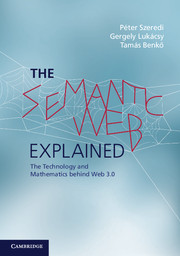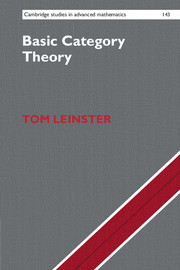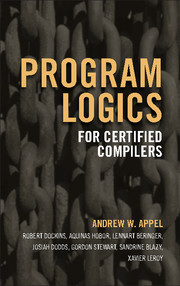Refine search
Actions for selected content:
5849 results in Programming Languages and Applied Logic
7 - The SHIQ tableau algorithm
-
- Book:
- The Semantic Web Explained
- Published online:
- 05 August 2014
- Print publication:
- 11 September 2014, pp 346-404
-
- Chapter
- Export citation
1 - The World Wide Web today
-
- Book:
- The Semantic Web Explained
- Published online:
- 05 August 2014
- Print publication:
- 11 September 2014, pp 9-51
-
- Chapter
- Export citation
8 - The Web Ontology Language
-
- Book:
- The Semantic Web Explained
- Published online:
- 05 August 2014
- Print publication:
- 11 September 2014, pp 407-450
-
- Chapter
- Export citation
Part III - Ontologies and the Semantic Web
-
- Book:
- The Semantic Web Explained
- Published online:
- 05 August 2014
- Print publication:
- 11 September 2014, pp 405-406
-
- Chapter
- Export citation
Contents
-
- Book:
- The Semantic Web Explained
- Published online:
- 05 August 2014
- Print publication:
- 11 September 2014, pp v-viii
-
- Chapter
- Export citation
Frontmatter
-
- Book:
- The Semantic Web Explained
- Published online:
- 05 August 2014
- Print publication:
- 11 September 2014, pp i-iv
-
- Chapter
- Export citation
5 - Reasoning on simple DL languages
-
- Book:
- The Semantic Web Explained
- Published online:
- 05 August 2014
- Print publication:
- 11 September 2014, pp 246-301
-
- Chapter
- Export citation
References
-
- Book:
- The Semantic Web Explained
- Published online:
- 05 August 2014
- Print publication:
- 11 September 2014, pp 451-459
-
- Chapter
- Export citation
2 - The Semantic Web and the RDF language
-
- Book:
- The Semantic Web Explained
- Published online:
- 05 August 2014
- Print publication:
- 11 September 2014, pp 52-121
-
- Chapter
- Export citation
Index
-
- Book:
- The Semantic Web Explained
- Published online:
- 05 August 2014
- Print publication:
- 11 September 2014, pp 460-471
-
- Chapter
- Export citation
Introduction
-
- Book:
- The Semantic Web Explained
- Published online:
- 05 August 2014
- Print publication:
- 11 September 2014, pp 1-6
-
- Chapter
- Export citation
4 - Description Logic
-
- Book:
- The Semantic Web Explained
- Published online:
- 05 August 2014
- Print publication:
- 11 September 2014, pp 175-245
-
- Chapter
- Export citation
Part II - Ontologies and logics
-
- Book:
- The Semantic Web Explained
- Published online:
- 05 August 2014
- Print publication:
- 11 September 2014, pp 173-174
-
- Chapter
- Export citation
6 - Implementing a simple DL reasoning engine
-
- Book:
- The Semantic Web Explained
- Published online:
- 05 August 2014
- Print publication:
- 11 September 2014, pp 302-345
-
- Chapter
- Export citation
3 - Managing and querying RDF sources
-
- Book:
- The Semantic Web Explained
- Published online:
- 05 August 2014
- Print publication:
- 11 September 2014, pp 122-172
-
- Chapter
- Export citation
Part I - The Semantic Web
-
- Book:
- The Semantic Web Explained
- Published online:
- 05 August 2014
- Print publication:
- 11 September 2014, pp 7-8
-
- Chapter
- Export citation

The Semantic Web Explained
- The Technology and Mathematics behind Web 3.0
-
- Published online:
- 05 August 2014
- Print publication:
- 11 September 2014

Basic Category Theory
-
- Published online:
- 05 August 2014
- Print publication:
- 24 July 2014

Program Logics for Certified Compilers
-
- Published online:
- 05 August 2014
- Print publication:
- 21 April 2014
2 - Adjoints
-
- Book:
- Basic Category Theory
- Published online:
- 05 August 2014
- Print publication:
- 24 July 2014, pp 41-64
-
- Chapter
- Export citation
